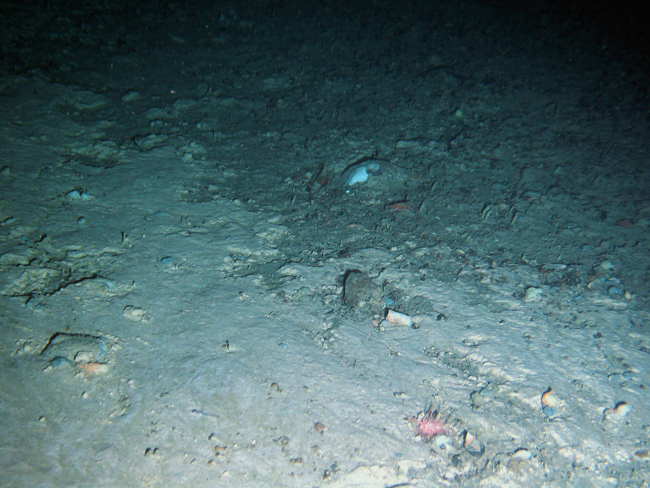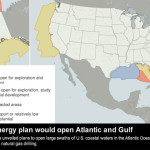 This is Guest Post from Dr. Daniel Jones a deep-sea biologist with the National Oceanography Centre in the United Kingdom and Project Coordinator for SERPENT (described below). Dan research focuses on how organisms in the deep sea are impacted by both natural and human disturbances.
This is Guest Post from Dr. Daniel Jones a deep-sea biologist with the National Oceanography Centre in the United Kingdom and Project Coordinator for SERPENT (described below). Dan research focuses on how organisms in the deep sea are impacted by both natural and human disturbances.
Drilling for oil is far from rare, even in deep offshore areas. Some quick GIS wizardry with public data sets shows that for the UK there are over 9000 wells in water greater than 30m depth and 328 deeper than 200m, for Norway 1390 wells greater than 30m and 546 over 200m depth. NOAA says there are 3800 offshore wells in the Gulf of Mexico. Although these cover some of the major exploration areas, there are at least hundreds of other deep water wells around the world in pretty much every ocean reaching depths up to a maximum of over 3000m, e.g. off India. This is a huge amount of activity, but does it create a notable disturbance to life on the seafloor? What are the impacts of offshore drilling on deep-water communities and, even more importantly, how much time does it take the seafloor environment and its beasts to recover?
Oil drilling is a very complex business. A massive simplification of the deep-water drilling process is.
- As they drill the first few hundred meters of the well (called, sensibly, the tophole) there is initial release at the seafloor of cuttings (ground up rock mixed with lubricating drilling mud), which make a volcano-shaped pile.
- After that they put a BOP (blow-out preventer; the valve structure that tragically failed on the Deepwater Horizon) onto the well and then all the cuttings are then brought to the surface where they are (usually) processed and discharged.
- In most open ocean environments these are then spread over a large area and are difficult to detect when they reach the seafloor. At shallower sites the surface-discharged cuttings add directly to the tophole cuttings pile.
The cutting piles are likely to have the biggest impact on deep-sea ocean animals.
If you take make a rapid perusal of the scientific literature associated with the impact of cuttings piles on the seafloor, you would be forgiven for thinking that drilling an oil well created a huge (up to 1km wide), deep (30m deep), oily pile of cuttings on the seafloor that, in a few cases, was so enriched in hydrocarbons that it attracted chemosynthetic organisms (e.g. the bivalve Thyasira sarsi).
Fortunately, since the pioneering days of offshore oil drilling in the late 1960’s, regulation has been built up and drilling practices have improved. The earlier papers on drilling impacts, written in the 80’s and early 90’s, focussed on the more highly polluting drilling sites that were then producing oil and were available for study. There were some epic papers produced (e.g. by John Gray’s group in Norway and staff of Heriot-Watt University in the UK), but these focus on outdated practices that (hopefully) don’t occur in the deep sea (at least in areas with developed regulatory regimes).
Since 2002 we have been researching the impacts of oil drilling on the seafloor fauna around active drilling rigs, using ROVs that are routinely in place on the rigs to do the research. This project, known as SERPENT (www.serpentproject.com), has been pretty successful and we have done research on nearly 90 visits to date. We are entirely opportunistic, getting access to whatever rigs we can, which can make structured science programmes more difficult. We have recently achieved one of our primary aims and been able to repeatedly access sites to see how deep-water communities respond to and recover from drilling over time.

So, what happens? The largest cuttings pile we have measured (from visual observation) has had a radius of 250 m (Jones et al. 2006) immediately after drilling. This equates to a visually disturbed area of around 0.1km2 – the size of 7 soccer pitches or a small shopping mall. The thickest part of the thickest pile we have measured was 3m thick. We have, so far, looked at recovery in two areas 1) Morvin in the Norwegian Sea (380m deep; Gates and Jones 2012) and 2) Laggan in the Faroe-Shetland Channel, North of Scotland (600m deep; Jones et al. 2012). In both of these (fairly) deep water areas there were major reductions (85% in 10 years at Laggan) in the area of the cuttings piles over time. At both sites there were also clear reductions in the animals we could see in ROV video (megafauna) within 50 m of the drilling activity. The mobile animals can swim away, but the attached or slow-moving megafauna were buried in the cuttings. Beyond 50 m, where the cuttings deposition was low, the animals fared better and there were smaller reductions in density and diversity. After the initial smothering, mobile scavengers, like prawns, move back in to the disturbed area, probably taking advantage of a feast of dead and dying animals. After 3 years at both sites there were increases in the numbers and diversity of animals coming back into the area close to drilling. At Laggan we also went back to a site that had been drilled 10 years earlier, this showed more evidence of recovery. But, even then, there was still visible disturbance (probably mostly cement) and lower numbers of animals.

What does all this mean? It looks from our data that recovery is happening even in 3 years, but is not complete (if that is even possible) until at least 10 years. This brings about loads of questions: do small animals with faster growth rates and reproduction recover more quickly, is there a particular sequence of colonization of animals, are any animals critical for recovery, what happens at the really deep sites etc. etc. It is surprising to me that these studies have not already been done, after all drilling for oil is not exactly a cheap process and if even a small percentage of revenue was invested in research (like they enforce in Brazil) on these processes the companies (and regulators) could actually practise evidence-based management. Although the individual footprint of each well appears to be fairly small, particularly after a few years, with many thousand wells in existence and many more being drilled the cumulative effects of drilling should not be ignored.






Nice post on a relevant issue. It is actually interesting that although we now see thousands of deep-water wells around the word and yet there has been a huge gap between the scientific and the regulatory demands put in lace by several national agencies. In respect to Brazil, it is true that there is oil money flowing into the research of deep-sea ecosystems, but these do not foster independent and collaborative research (specially into operational and long-term impacts) as illustrated by the Serpent project. Much of this monitoring is being carried by private companies that produce only technical and mostly non-reviewed data on those operations.
Check out the Benn et al. (2010) paper and you will see that the “footprint” of oil drilling in the NE Atlantic is minuscule (23 km^2 vs. almost 14,000 km^2) compared to bottom trawling. It always amazes me how people can get themselves all worked up about oil drilling (admittedly when there is a spill it is a true catastrophe, but recoveries in shallow water at least are on the order of a decade), while every day hundreds or thousands of sq. kilometers of bottom the world over are being reduced to bare substrate, rubble, or some very early successional stage by bottom trawls. Even so, the call to stop bottom trawling is what one might generously be referred to as ‘muted.’ But there is a chance now to stop bottom trawling in the deep sea of the NE Atlantic thanks to a proposal put forward by the European Fisheries Commissioner, Maria Damanaki. This proposal will be voted on around April 2013.